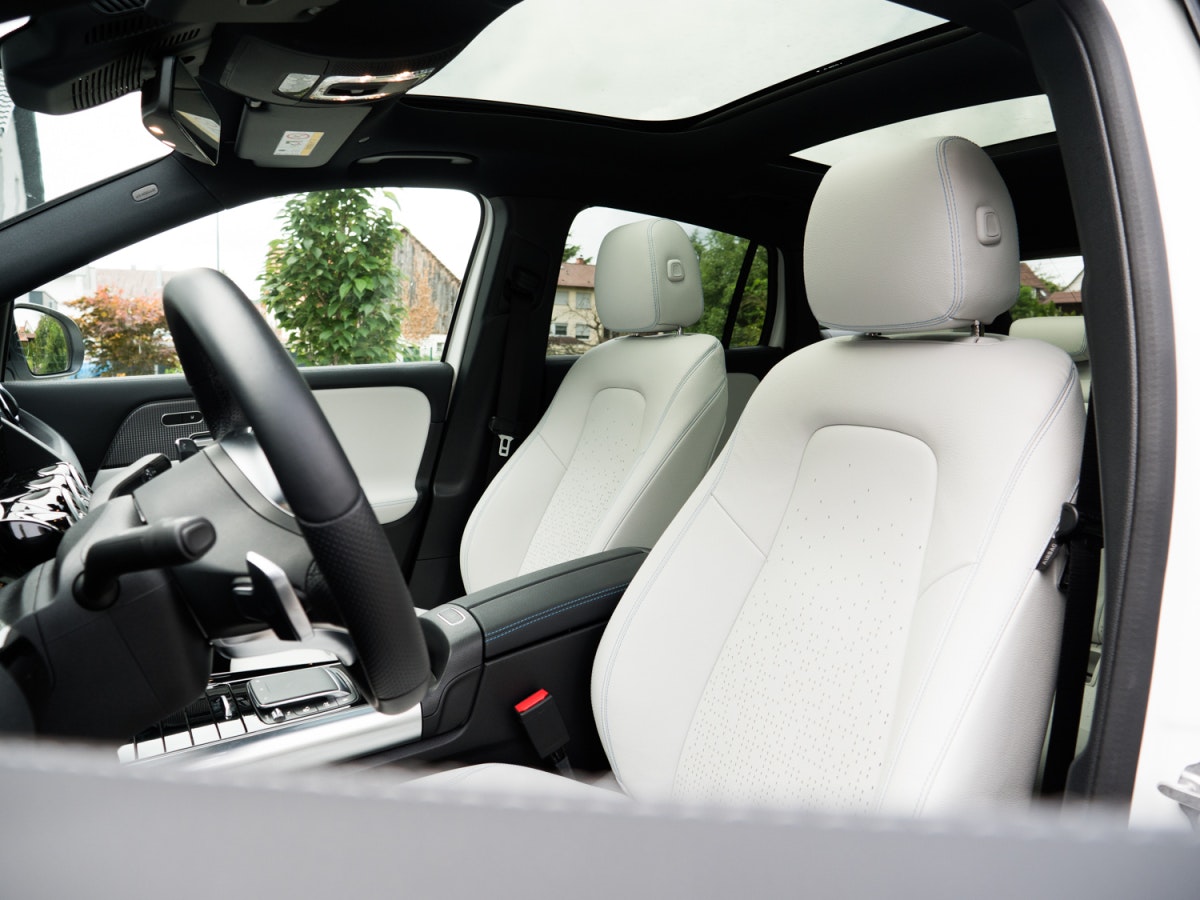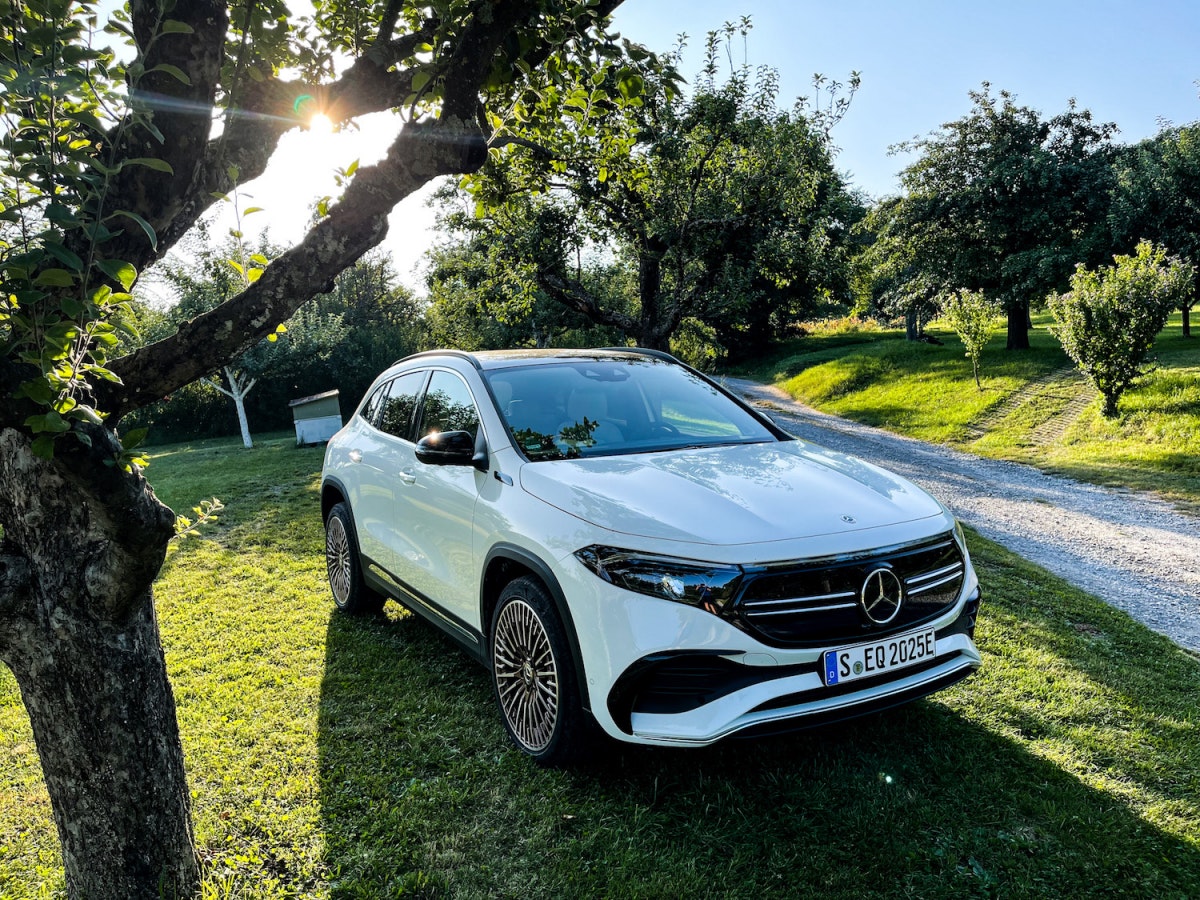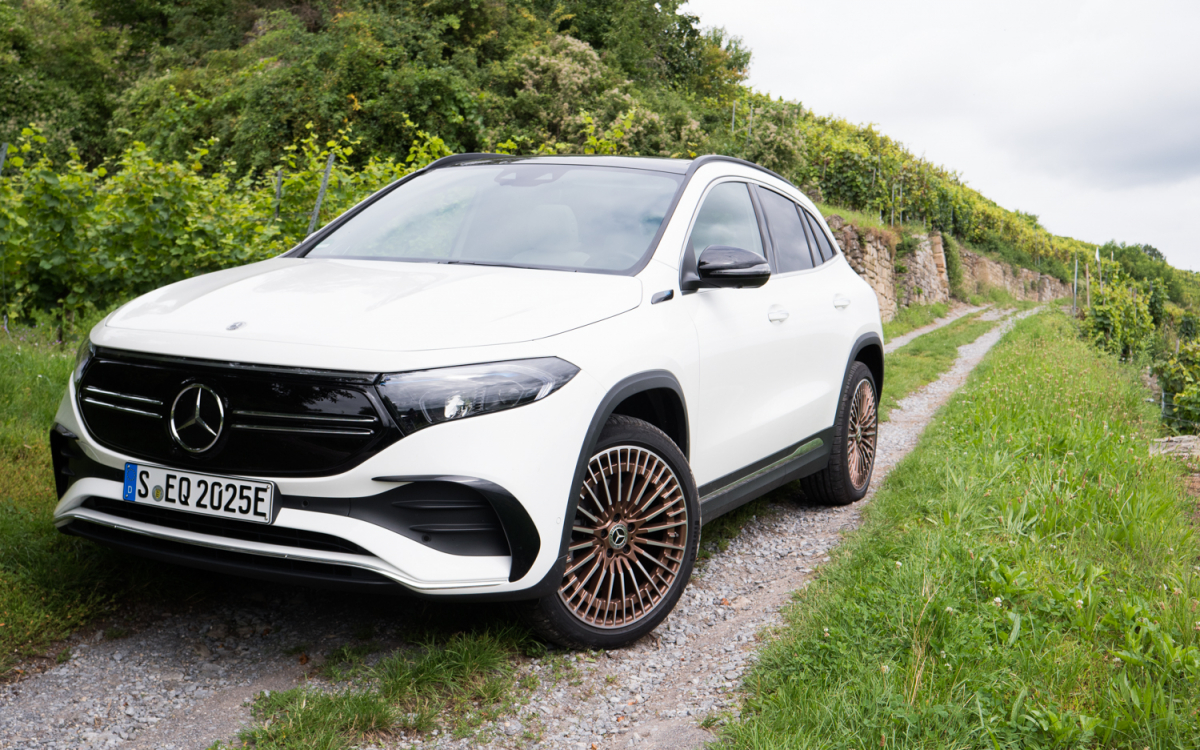Mercedes-Benz EQA put to the test: Premium electric car for those willing to compromise
The Mercedes-Benz EQA is a comfortable compact SUV that is at home in the premium segment. In view of its qualities as an electric car, however, a willingness to compromise is required.
The German auto industry has been neglecting electromobility for (too) a long time. It’s not a secret. However, since it has become clear that the internal combustion engine no longer has a future, Germany’s carmakers have been outdoing each other with announcements to “phase out combustion engines”. For example, Mercedes-Benz has announced that by 2030 “wherever market conditions allow” it will only offer battery-electric cars. Of course, this is a somewhat vague formulation, but the direction is clear – especially since some fully electric models, whose market launch was only planned for 2024 or 2025, are due to appear a year earlier.
The Mercedes-Benz portfolio currently includes five fully electric models: three SUVs (EQA, EQB and EQC), a sedan (EQS) and a van (EQV). The EQS is the first (and so far only) model that is based on the new modular electrical architecture (MEA) from Daimler. All other models are structurally derived from a combustion engine.
This fact does not necessarily have to be a disadvantage, but it does require a certain willingness to compromise, as our test of the compact SUV EQA shows.
Contents
Mercedes-Benz EQA: A Mercedes through and through
When you join the EQA, you ultimately find yourself in a GLA. This is simply because the fully electric SUV is based on the MFA2 platform from Mercedes-Benz, like the rest of the A-Class family. The designers have given the EQA a few visual accents, such as the black panel grill and the continuous LED light strip, but the relationship to the combustion models – similar to the EQC – is unmistakable.
On the one hand, it has advantages. Because unlike in the electric car bubble, there are still many people who are not only skeptical about electromobility, but also operating concepts that reduce everything to a huge touchscreen. In the EQA, Mercedes-Benz is using MBUX, one of the most advanced infotainment systems on the market, but there are still buttons and switches for everything. In other words: Anyone who has driven a combustion engine from Mercedes-Benz in recent years will immediately feel at home in the EQA.
The Mercedes-Benz EQA relies on MBUX and is otherwise largely similar to the other models in the A series. (Photo: Frank Feil)
In addition, the EQA offers its occupants the usual Mercedes high level of driving comfort and first-class workmanship. When it comes to equipment, there are almost no limits: panoramic sliding roof, Burmester surround sound system, state-of-the-art assistance systems and all kinds of colors and materials. If you have a lot of money in the configurator, you can easily raise the entry-level price from just under 44,000 euros (including the manufacturer’s environmental bonus) to 60,000 euros – mind you for the EQA 250 with 190 hp and front-wheel drive. The starting price for the all-wheel-drive model, the EQA 300 4Matic, is just under 50,000 euros.

The high quality of workmanship and the premium quality of the EQA are particularly evident in the interior. (Photo: Frank Feil)
Mercedes-Benz EQA: the legacy of the combustion engine
On the other hand, vehicles like the EQA, which are derived from a combustion engine, of course also have disadvantages compared to models that were designed from the ground up as electric cars.
It starts with the weight. The EQA weighs a little more than two tons, so that the acceleration process from 0 to 100 kilometers per hour takes 8.9 seconds despite an impressive 190 hp. For comparison: The GLA 220 d completes the sprint in just 7.4 seconds with the same horsepower. Since Mercedes-Benz opted for front-wheel drive for the EQA 250, the traction control must also intervene regularly and prevent the wheels from spinning when you fully depress the accelerator pedal when stationary.
You don’t necessarily buy a compact SUV because you want to win a duel at the traffic lights. So you can overlook the leisurely acceleration. But the legacy of the combustion engine is also noticeable in terms of electrical consumption. Depending on the driving style, consumption fluctuates between 19 kilowatt hours per 100 kilometers in city traffic and 24 kilowatt hours on the motorway. In our test, we were able to move the significantly larger Skoda Enyaq iV – but developed as an electric car – with an average of 16 to 19 kilowatt hours per 100 kilometers.
The issue of space remains. You won’t find the typical electric car Frunk at the EQA – and the trunk is also rather modest at 340 liters. After all, the compartment in the trunk floor offers space for the charging cable and the first-aid kit.

On the fast charger, the EQA can charge up to around 60 percent SoC with 100 to 110 kilowatts. (Photo: Frank Feil)
Mercedes-Benz EQA: electric driving fun
Despite the aforementioned points of criticism with regard to the combustion engine legacy, the EQA is not a bad electric car. The charging curve is rock solid: up to almost 60 percent SoC (State of Charge), the charging power is between 100 and 110 kilowatts. Between 60 and 80 percent SoC, this continuously drops to 75 kilowatts. This results in a charging time of around 30 minutes if you charge the EQA from 10 to 80 percent.
With a net usable battery capacity of 66.5 kilowatt hours, the Mercedes-Benz EQA has a realistic everyday range of around 300 kilometers. With optimal conditions and a forward-looking driving style, 20 to 40 kilometers more are possible. That doesn’t make the EQA a range miracle, but it can handle most everyday situations without any problems – especially since the compact SUV functions as a second car in most cases anyway.
By the way, we really liked the EQA’s individual freedom when it comes to recuperation. Unlike the BMW i3, which is designed exclusively for one-pedal driving, or the Audi E-Tron Sportback, which does not support one-pedal driving at all, the recuperation of the Mercedes-Benz EQA can be adjusted to suit your individual needs – from one-pedal driving to light recuperation and sailing. If you want, you can also have the compact SUV decide according to the driving situation in “D Auto”. This is a particularly helpful feature for newcomers to electric cars, as not everyone immediately gets along with the fact that the car brakes as soon as you take your foot off the accelerator.

Especially with the 20-inch rims from AMG, the EQA becomes an eye-catcher. (Photo: Frank Feil)
The Mercedes-Benz EQA is a first-class car, but …
… just an average electric car. This differentiation is important when it comes to the overall assessment of the EQA.
Anyone looking for a high-performance electric car with low consumption and high range, in which the advantages of electromobility are also reflected in a generous amount of space, is wrong with the EQA. Although Mercedes-Benz put a lot of effort into the development, the EQA basically remains a GLA with a few design accents and a battery on the underside.
But that doesn’t mean the EQA is a bad car. On the contrary. Anyone who opts for the fully electric compact SUV gets a first-class vehicle with a high level of driving comfort. There is absolutely nothing to complain about in this regard. Especially since the EQA is much quieter and more pleasant to drive than the GLA, for example, due to the electric drive.
If you don’t want to drive weekly distances of more than 500 kilometers in a row, you won’t have any problems with the everyday range of around 300 kilometers. In any case, the charging process (10 to 80 percent SoC) on the home wallbox only takes a little more than four hours thanks to the eleven kilowatt onboard charger.



